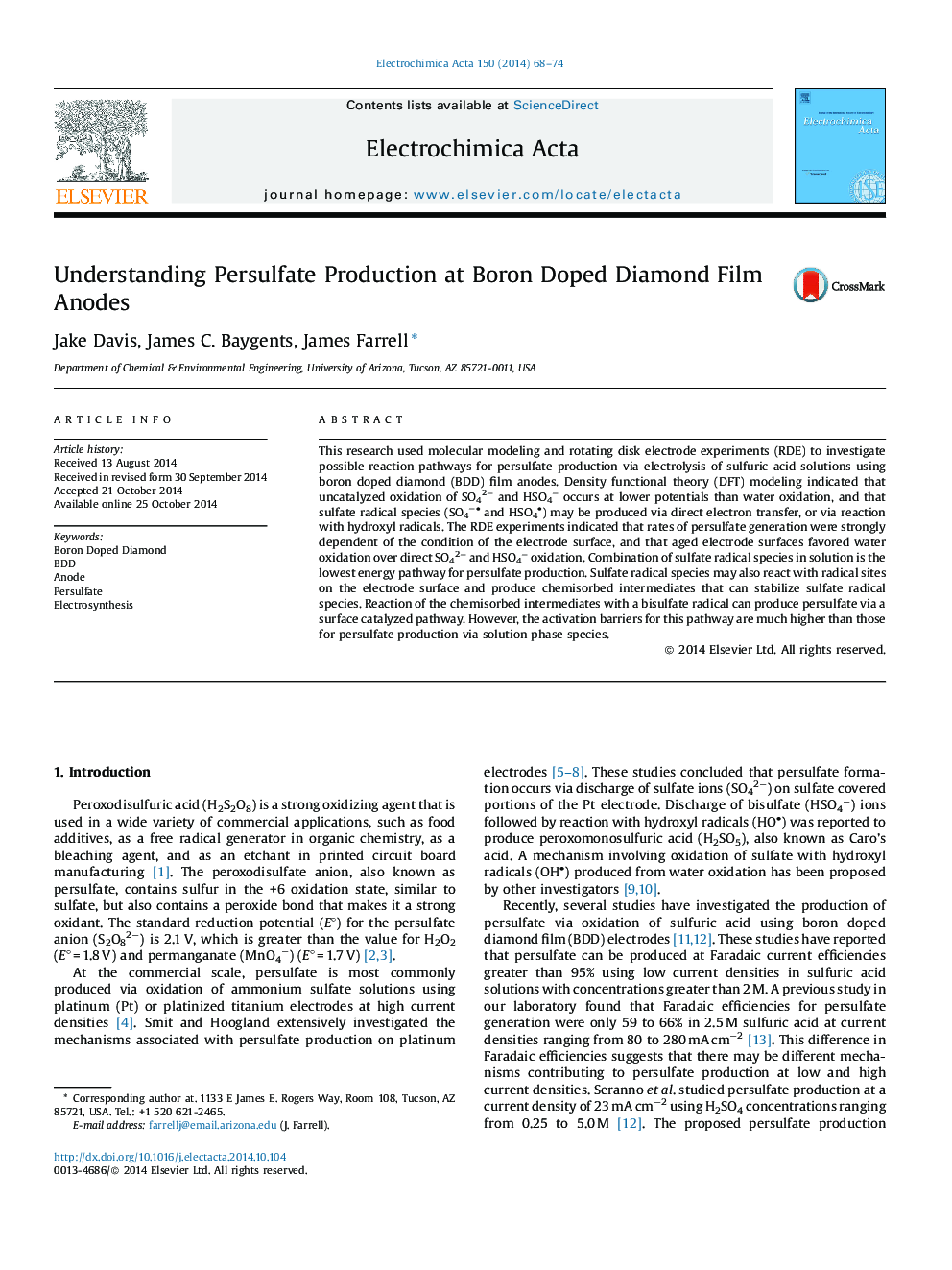| کد مقاله | کد نشریه | سال انتشار | مقاله انگلیسی | نسخه تمام متن |
|---|---|---|---|---|
| 6612686 | 459584 | 2014 | 7 صفحه PDF | دانلود رایگان |
عنوان انگلیسی مقاله ISI
Understanding Persulfate Production at Boron Doped Diamond Film Anodes
دانلود مقاله + سفارش ترجمه
دانلود مقاله ISI انگلیسی
رایگان برای ایرانیان
کلمات کلیدی
موضوعات مرتبط
مهندسی و علوم پایه
مهندسی شیمی
مهندسی شیمی (عمومی)
پیش نمایش صفحه اول مقاله

چکیده انگلیسی
This research used molecular modeling and rotating disk electrode experiments (RDE) to investigate possible reaction pathways for persulfate production via electrolysis of sulfuric acid solutions using boron doped diamond (BDD) film anodes. Density functional theory (DFT) modeling indicated that uncatalyzed oxidation of SO42â and HSO4â occurs at lower potentials than water oxidation, and that sulfate radical species (SO4â
- and HSO4
- ) may be produced via direct electron transfer, or via reaction with hydroxyl radicals. The RDE experiments indicated that rates of persulfate generation were strongly dependent of the condition of the electrode surface, and that aged electrode surfaces favored water oxidation over direct SO42â and HSO4â oxidation. Combination of sulfate radical species in solution is the lowest energy pathway for persulfate production. Sulfate radical species may also react with radical sites on the electrode surface and produce chemisorbed intermediates that can stabilize sulfate radical species. Reaction of the chemisorbed intermediates with a bisulfate radical can produce persulfate via a surface catalyzed pathway. However, the activation barriers for this pathway are much higher than those for persulfate production via solution phase species.
- and HSO4
- ) may be produced via direct electron transfer, or via reaction with hydroxyl radicals. The RDE experiments indicated that rates of persulfate generation were strongly dependent of the condition of the electrode surface, and that aged electrode surfaces favored water oxidation over direct SO42â and HSO4â oxidation. Combination of sulfate radical species in solution is the lowest energy pathway for persulfate production. Sulfate radical species may also react with radical sites on the electrode surface and produce chemisorbed intermediates that can stabilize sulfate radical species. Reaction of the chemisorbed intermediates with a bisulfate radical can produce persulfate via a surface catalyzed pathway. However, the activation barriers for this pathway are much higher than those for persulfate production via solution phase species.
ناشر
Database: Elsevier - ScienceDirect (ساینس دایرکت)
Journal: Electrochimica Acta - Volume 150, 20 December 2014, Pages 68-74
Journal: Electrochimica Acta - Volume 150, 20 December 2014, Pages 68-74
نویسندگان
Jake Davis, James C. Baygents, James Farrell,